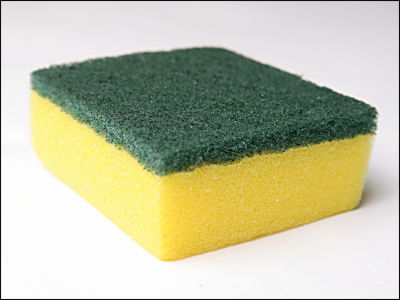Kinki University investigates 'Is there any problem in hygiene even if the mask is worn for a long time?'

As the new coronavirus (SARS-CoV-2) spreads around the world, it is recommended to wear masks in each country to prevent the spread of infection. Regarding this mask, Mr.
Bacterial and fungal isolation from face masks under the COVID-19 pandemic | Scientific Reports
https://doi.org/10.1038/s41598-022-15409-x
Park et al. Conducted a questionnaire to 109 participants and collected information on mask types and usage periods. While various types of masks such as non-woven masks and gauze masks are on the market, participants asked questions such as what type of mask they wore and how long they had been using the same mask, and their habit of gauze. We also asked questions about lifestyle such as whether there was a mask and whether there was a habit of eating natto.
Regarding the types of masks, non-woven masks accounted for the largest percentage at 78% (85 people), which was significantly higher than non-woven masks such as polyurethane, gauze, and cloth. Regarding the period of use, it was found that 75% of non-woven mask users were disposable in one day, while 58% of other mask users wore the same mask for two days or more. Regarding this, since masks made of polyurethane etc. are designed so that they can be washed and used repeatedly, it is thought that the user washed the mask many times and reused it. There was no significant difference in the type of mask and the period of use by gender.

In addition, Park et al. Collected about 200 masks worn by the participants and cultivated the bacteria by pressing the outside and inside separately against an agar plate for culturing bacteria or fungi. We tried to identify the microorganisms attached to each surface of the mask.
Regarding the microorganisms attached to the mask, both bacteria and fungi were confirmed, and it was found that the number of fungi was smaller. In addition, although the average number of colonies of bacteria on the inside (face side) of the mask was 13.4 times higher than that on the outside, most of them were non-pathogenic indigenous bacteria. On the other hand,
As for fungi, in contrast, the number of colonies on the outside of the mask was larger, 2.4 times that on the inside. Although there was no significant difference in fungal colony numbers between non-woven and non-woven masks, it was also found that masks used for more than 2 days had increased colony numbers.
Bacteria and fungi can grow due to the humidity during wearing, but if you remove the mask, it will dry overnight, and the bacteria may die. On the other hand, fungi are hard to dry, so they can survive even when the mask is dry. It seems that this is the reason why only fungi tended to increase with masks used for 2 days or more.
According to a survey related to the lifestyles of the participants, it was found that there was no difference in the number of colonies depending on the means of commuting to work or school such as train or walking, and the presence or absence of gargling habits. It was also reported that there was a high probability that Bacillus subtilis that ferments natto would be found in the masks of people who eat natto on a regular basis.
Since bacteria harmful to the human body were also detected in the mask, Park et al. Suggest that immunocompromised people should not use the same mask repeatedly to prevent microbial infection.

Related Posts:
in Posted by log1p_kr







